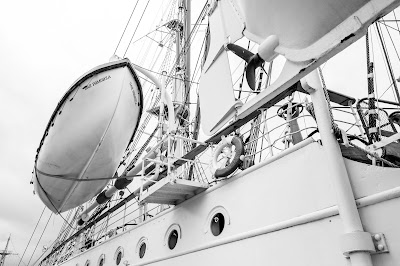The
“umbilical” is the fibers optic tether major from a docking place
to the ROV. Docking head or top hat are titles also used as it rests
on top of the ROV and they are hydraulically locked together for
release and restoration. The umbilical is versatile enough to be
wound onto a winch. The winch is located inside the docking head.
Umbilical winch and sheave techniques developed for ROV/Ts of all types utilize direct on-winch effective heave settlement technology offering the extremely accurate position and speed power over a higher lifetime. Winches are offered as a lightweight, electrically- motivated models with innovative full distance spooling techniques. Sheave techniques allow for versatile positioning of the winch on board while keeping umbilical reliability. Additionally, winches are built to any category specifications, guidelines and specifications.
The Uses Of These Marine Devices
A
CTD winch is a group of sensors which evaluate conductivity, heat
range, and stress. Sensors generally check out at a rate of 24 Hz.
Detail dimensions come from the statistic of hydrostatic stress, and
salinity is calculated from electric conductivity. Sensors are
organized within a steel or material real estate, the material used
for the real estate identifying the depth to which the CTD can be
reduced. Titanium enclosures allow testing to absolute depths in
excess of 10,000 meters (33,000 ft). Other sensors may be added to
the group, such as some that evaluate substance or scientific
factors, such as demolished fresh air and chlorophyll fluorescence,
the latter an indicator of the focus of minute photosynthetic
creatures (phytoplankton) found in water.
The
launch and recovery system is developed to make critical subsea
functions secure and effective in the toughest surroundings globally.
Methods are extremely reliable and precise and are developed to hold
up against excessive powerful causes and are provided with an
energetic factor of 3. These effective and precise techniques enable
the secure function of heavy techniques in negative varying weather
conditions of -20°C to +40°C and sea declares up to Hs6.
The
LARS are provided as complete self-contained models with integrated
sub-systems, composed of an A-frame or pointer, umbilical winch,
management program, electric or hydraulic energy pack and operating
system.
The
controls on the launch
and recovery system are simple hydraulic levers, and the winch is
electric. The canola-based hydraulic liquid was used to reduce
pollution or ecological impact in the event of a leak. Options that
are available are a bananas sheave program, a hydraulic surprise
dampening program on the sheave, and Dynamic Heave Compensation
System. The Dynamic Heave Compensation System should allow us to
function off most veins widely used in the overseas industry to sea
states of 5 or 6.
The
LARS can be eliminated from the control container using a gantry
system built into the package without the use of an exterior
motorized hoist. Once it’s constructed, the winch will lift either
the ROV alone, or the ROV implemented in the aluminum deployment
cage. Once in depth, the ROV may work within a distance of
approximately 45m/150ft of the crate. All techniques are provided
with the ROV umbilical termination outlet and the hydraulic energy
unit to function the program can also be provided if required. All
designs are produced using Autodesk Founder and information can be
provided to clients for incorporation in deck layouts.

No comments:
Post a Comment